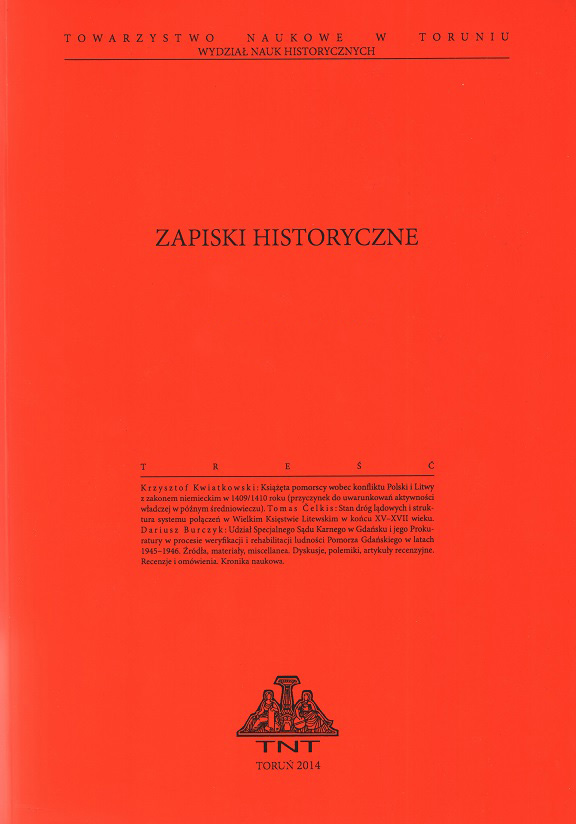Topografia i układ przestrzenny krzyżackiego zamku komturskiego w Toruniu w świetle średniowiecznych źródeł pisanych
Topography and Spatial Layout of the Castle of the Teutonic Commander in Toruń in the Light of the Medieval Written Sources
Author(s): Sławomir Jóźwiak, Janusz TrupindaSubject(s): Architecture, Military history, Middle Ages
Published by: Towarzystwo Naukowe w Toruniu
Keywords: the Middle Ages;medieval architecture in Prussia;the Teutonic Order;Prussia, Teutonic castles;castle;
Summary/Abstract: The information included in the medieval written sources enrich our knowledge about the Toruń castle destroyed in 1454. The construction of the part of the defensive walls (made from stone?) lasted at least from 1255. In 1262 the stronghold in its original form had been already erected. In the subsequent years (1263) works took place to construct its interiors (at least a chapel located on the first floor in the eastern part of the southern wing). The main octagonal tower situated in the northern part of the courtyard of the High Castle was frequently mentioned in the medieval written sources (starting from 1381). However, it must have been erected earlier.The information about buildings located beyond the space of the High Castle is particularly interesting. The buildings included the “gemach” of the commander (with a chapel, refectory and a kitchen) in the northern part of the western outer bailey, the “gemach” of the castle’s commander – probably in the vicinity (it was created later – after 1409) and the “summer house” (“somerhaws”) with the “summer hall” (“aula estivalis”) existing since at least the 1380s and situated in the southern part of the western Low Castle. Among other buildings recorded in the medieval written sources there were also the “gemach” of the Teutonic head of the mint (“Münzmeister”) located next to the western defensive wall of the Low Castle; the “gemach” of the steward of Königsberg (Kaliningrad, Russia) mentioned from the end of the 14th century and situated probably in the western part of the Low Castle; the building of the infirmary which might have been located in the north-east part of the Low Castle. In the topography of the castle there were also outbuildings. For example, at least two mills were situated within the defensive walls probably in the eastern part of the Low Castle. To sum up, the medieval written sources present a picture of a complex construction of the Toruń castle.
Journal: Zapiski Historyczne
- Issue Year: 81/2016
- Issue No: 3
- Page Range: 7-35
- Page Count: 30
- Language: Polish

